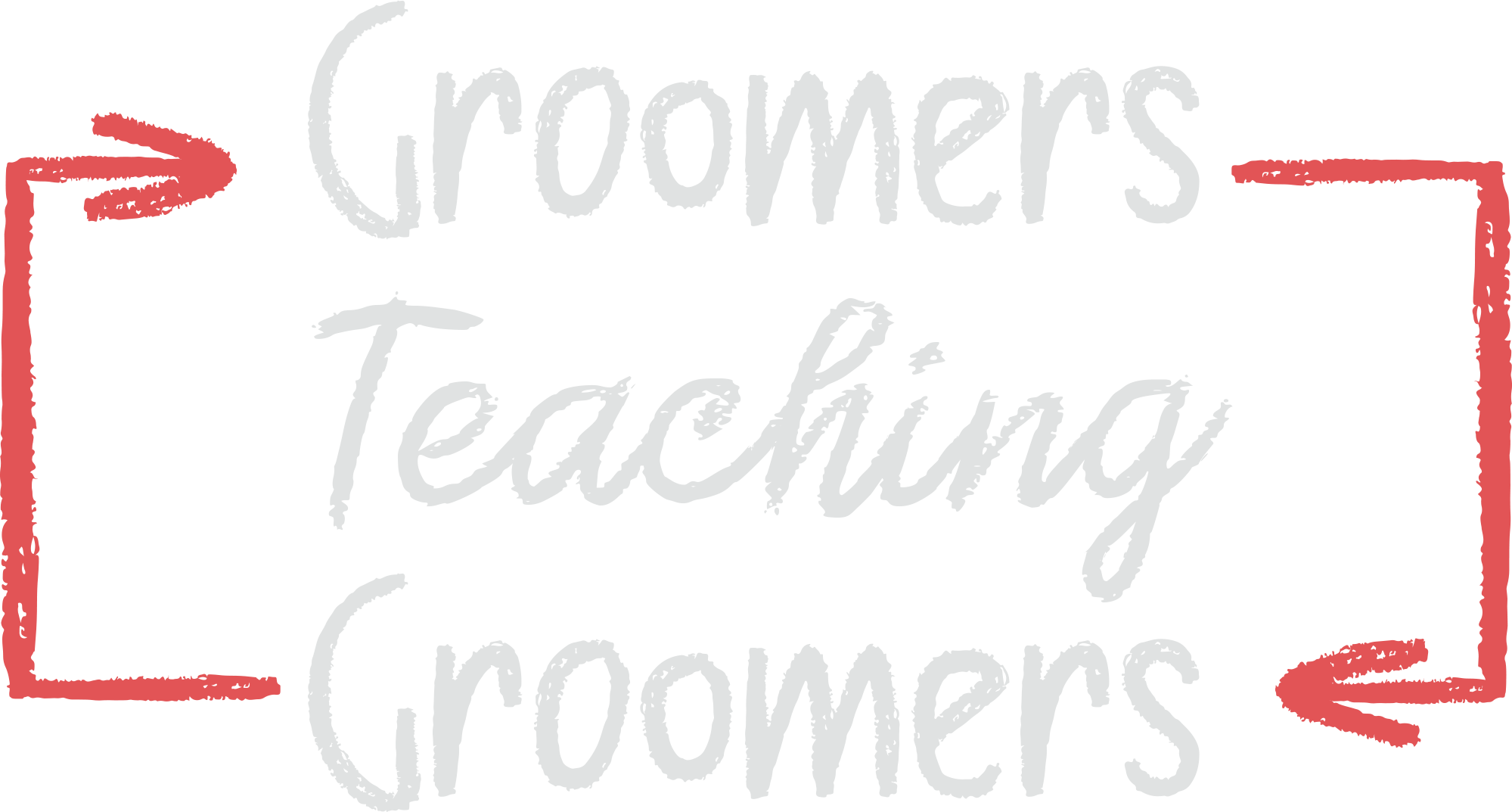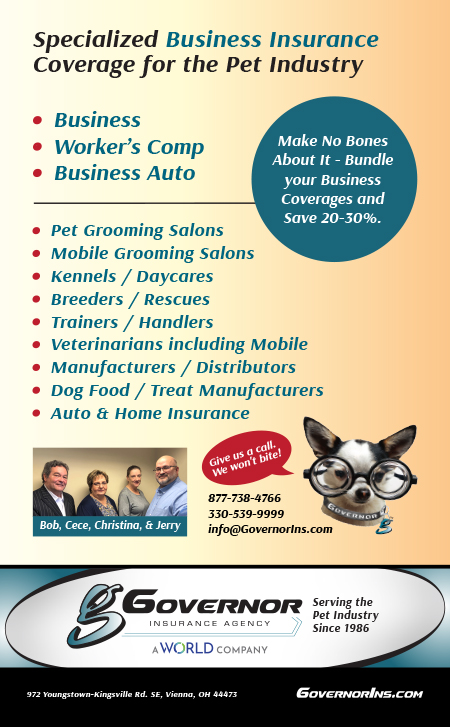

 here are almost no educational or competency requirements for becoming a pet groomer nationwide. While we are not yet a sanctioned profession due to this lack of educational credentialing, we are a complex, skilled trade in an industry that works on live animals which requires extensive knowledge and experience to do our jobs well.
here are almost no educational or competency requirements for becoming a pet groomer nationwide. While we are not yet a sanctioned profession due to this lack of educational credentialing, we are a complex, skilled trade in an industry that works on live animals which requires extensive knowledge and experience to do our jobs well.
Most groomers learned their craft by apprenticing under other groomers, as trades have been taught for thousands of years. But because information is constantly emerging regarding dogs, cats, skin and coat, science, behavior, equipment and products, tools and technology, and safety and health, continuing education is essential for us to commit to—even though we may already be working as groomers.
Thankfully, many experienced groomers are stepping up to act as teachers and to aid in creating continuing educational opportunities for every groomer to access. The apprenticeship model which has been the primary method by which most groomers learn to groom is now extending to the “classrooms” of groomer trade shows/educational conferences and online training. Those who step up to teach are usually not trained to be teachers and are getting on-the-job training as well.
Continuing our grooming education throughout our careers carries its own rewards. Groomers tell me almost daily how much they love learning more about their craft. Groomers come away from these educational opportunities inspired, better equipped with new skills and information, and more capable of excellence in their chosen profession.
Our vocational cousins in the human cosmetology and beauty field require extensive schooling. All states require training of up to two years from licensed schools with regular continuing education requirements in order to cut human hair. They also must take state-mandated tests or pass state boards along with a set number of recognized CEUs to maintain their licenses. Additionally, there are, of course, fees that go along with the training required to obtain a state license in order to legally engage in their work grooming humans.
It has always amazed me that human hair-cutting requirements are so much higher than grooming’s almost non-existent ones, given that our pet clients are so much more varied and demanding than their human clients are. Dog coat types are far more diverse and far more difficult to manage and work with than human hair, and the science about canine skin and coat is vastly more complex. Also, we all know that handling live animals is much more challenging. I expect very few cosmetologists have been bitten by a scared or resisting client.
Instead, pet grooming training is still conducted the way other trades have historically passed down their skills—through apprenticeship systems where students learn complex hands-on skills through many months, even years, of practice and guidance from, ideally, a masterful groomer. But, this alone does not make one a Master Groomer, confer a credential, or give one the right to call themselves “certified” or add letters after their name.
One of the realities of this groomer training system is that the focus is almost exclusively on skill-building with little or no academic component—not to mention the inconsistency of training, knowledge and qualifications of those doing the training. Results are mixed, with some groomers getting good to excellent training, and others below par.
As pet grooming becomes more important in our society, the inconsistency of training for groomers could lower our collective economic value, and potentially even cause a legislative backlash. Sooner or later, regulations and standards may be imposed, either internally by the industry itself, or externally by legislators looking for a cause. While I know there will be disagreement among us on this issue, I, for one, would not mind some governmental oversight of groomer competency before allowing just anyone to take sharp tools to a live animal.
The grooming industry has responded to this dearth of educational credentialing, as other trades have, by creating our own voluntary credentials from within the field. NDGAA, ISCC and IPG have been certifying groomers with extensive testing and hands-on skills evaluation for decades. AKC has recently added its own S.A.F.E. and now AKCMG credential to the list of excellent credentials available for groomers. Additionally, there are some state-licensed grooming schools and certificate classes offered at various groomer educational events. Volunteer groups like the MGCBP (Master Groomers Council on Best Practices) also work to help gather and disseminate the latest information about evolving grooming practices, and their work is invaluable.
But it is unknown which of these, or the many other programs already in place, would pass muster for a possible state effort to require a license to groom comparable to what is currently required of beauticians. Our grooming industry is clearly increasing its own internal efforts to show our commitment to education and to provide standards of its own. These credentialing programs are still voluntary; however, the question remains: Should a state move to license us?
Certificate courses are another way to document completion of a high-level and somewhat longer course. However, certificate classes are not the same as being a Certified Groomer, which currently involves passing written tests and hands-on testing of actual grooming on live dogs. Additionally, some grooming schools are state accredited and offer state-recognized and curriculum-based diplomas, but we should be clear that most of our industry’s post-nominals do not yet carry the validation in law that other professions do.
First, I learn as much from every student in my classes as they learn from me. I go in expecting that and looking for it. Teaching is an exchange; a two-way street; a conversation. I never fail to learn. Being teachable is part of teaching, and it helps me refine material when I see how it is received and understood. (And I have made a ton of new friends who are all my colleagues.)
Second, teaching is best viewed not as a performance. Hopefully any nerves one might have about speaking to a group can be set aside or conquered. Teaching is simply communicating ideas and information. It is, at its best, about empowering the student. They are the focus, not you, so relax and be yourself. Let what excites you about what you are teaching show through. Be authentic. Smile. Share from the heart because, after all, what we talk about is caring for animals which can be truly inspirational subject matter. Teaching is meaningful work, but it would be unwise to get into teaching as a path towards riches.
Also, remember that people have physical needs, whether online or in a classroom. They need comfort, breaks, entertainment, visual support (most people are visual learners!), and to be able to hear and understand you. They will learn better if you give them the material in repeated and different formats—writing, speaking, visuals, hands-on practice, etc.—in order to understand you, see you emote authentically, and to put some physicality and variety into your presentation. Do not be afraid to be earnest, even emotional, about the importance of the information that you are sharing.
When the material inspires you, share that enthusiasm with others. Be willing to risk some vulnerability and humanity in front of them—it will only serve to strengthen the impact of what you teach! Share your journey and the hard lessons you have learned. We all learn from making mistakes. Help them to laugh at and learn from these goofy mistakes. We do not need a pretense that we do not make mistakes.
Share disagreements. Acknowledge controversy. Share methodology. Know what your own agenda is and be honest about it. Ask your students what their agenda is; what do they want or need to learn? Cite your sources! Admit what we do not yet know for sure. Give them ways to learn more on the topic. Give them a reasonable way to stay connected to you. (For example, I created a Facebook Group.) Most of all, make clear where “old school thinking” needs to give way to better-informed best practices. Don’t be afraid to identify improper techniques that compromise the wellbeing of the animals entrusted to our care.
Thank you for stepping up to teach what you know. You are so needed in an industry that currently has no formal training requirements.
In the meantime, there is literally nothing better that you can do as a groomer than commit yourself to continuing education in every way you possibly can. Work to become a Certified Master Groomer. Go to trade shows. Take classes. Avail yourself of the many online educational opportunities and videos that the pandemic has made easier to access. Get certificates that mean something and display them proudly where you groom. Join your state grooming association and, if your state does not have one, help start one.



